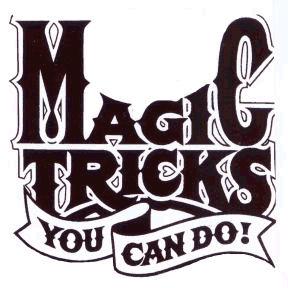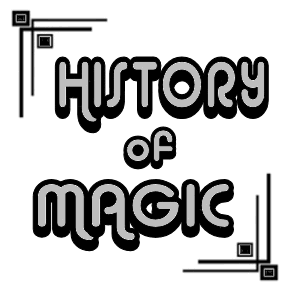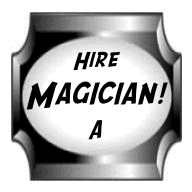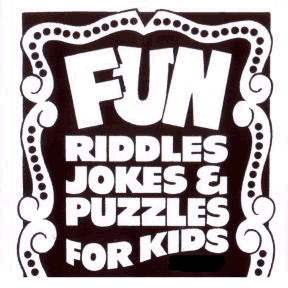
Norm Barnhart's
|
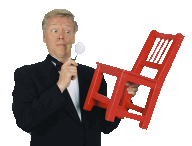
|
History of Magic (illusion)
Excerpted from Wikipedia, the free encyclopedia
History
The term "Magic" is etymologically derived from the Old Persian word Magi. Performances we would now recognize as conjuring have probably been practiced throughout history. The same level of ingenuity that was used to produce famous ancient deceptions such as the Trojan Horse would also have been used for entertainment, or at least for cheating in gambling games, since time immemorial. However, the profession of the illusionist gained strength only in eighteenth century, and has enjoyed several popular vogues.
From 1756 to 1781, Jacob Philadelphia performed feats of magic, sometimes under the guise of scientific exhibitions, throughout Europe and in Russia. Modern entertainment magic owes much of its origins to Jean Eugène Robert-Houdin (1805-1871), originally a clockmaker, who opened a magic theatre in Paris in the 1840s. His speciality was the construction of mechanical automata which appeared to move and act as if they were alive. The British performer J N Maskelyne and his partner Cooke established their own theatre, the Egyptian Hall in London's Piccadilly, in 1873. They presented stage magic, exploiting the potential of the stage for hidden mechanisms and assistants, and the control it offers over the audience's point of view. The greatest celebrity magician of all time, Harry Houdini (real name Ehrich Weiss, 1874 - 1926), took his stage name from Robert-Houdin and developed a range of stage magic tricks, many of them based on escapology (though that word was not used until after Houdini's death). The son of a Hungarian rabbi, Houdini was genuinely highly skilled in techniques such as lockpicking and escaping straitjackets, but also made full use of the whole range of conjuring techniques, including fake equipment and collusion with individuals in the audience. Houdini's showbusiness savvy was as great as his performing skill. There is a Houdini Museum dedicated to him in Scranton, PA. In addition to expanding the range of magic hardware, showmanship and deceptive technique, these performers established the modern relationship between the performer and the audience.
In this relationship, there is an unspoken agreement between the performer and the audience about what is going on. Unlike in the past, almost no performers today actually claim to possess supernatural powers (although there are exceptions to this, they are regarded as charlatans). It is understood by everyone that the effects in the performance are accomplished through sleight of hand (also called prestidigitation or léger de main), misdirection, deception, collusion with a member of the audience, apparatus with secret mechanisms, mirrors, and other trickery (hence the illusions are commonly referred to as "tricks"). The performer seeks to present an effect so clever and skillful that the audience cannot believe their eyes, and cannot think of the explanation. The sense of bafflement is part of the entertainment. In turn, the audience play a role in which they agree to be entertained by something they know to be a deception. Houdini also gained the trust of his audiences by using his knowledge of illusions to debunk charlatans, a tradition continued by magicians such as James Randi, P. C. Sorcar, and Penn and Teller.
Magic has come and gone in fashion. For instance, the magic show for much of the 20th century was marginalized in North America as largely children's entertainment. A revival started with Doug Henning, who reestablished the magic show as a form of mass entertainment with his distinctive look that rejected the old stereotypes and his exuberant sense of showmanship that became popular on both stage and numerous television specials.
Today, the art is enjoying a vogue, driven by a number of highly successful performers such as David Copperfield, Lance Burton, Penn and Teller, Derren Brown, Barry and Stuart, Criss Angel, Dorothy Dietrich, Greg Frewin and many other stage and TV performers. David Blaine is sometimes included in this category, though his major performances have been more a combination of Houdini-style escape tricks and physical endurance displays than the illusion magic performed by others. The mid-twentieth century saw magic transform in many different aspects: some performers preferred to renovate the craft on stage --- such as The Mentalizer Show in Times Square which dared to mix themes of spirituality and kabbalah with the art of magic --- others successfully made the transition to TV, which opens up new opportunities for deceptions, and brings the performer to huge audiences. A widely accepted code has developed, in which TV magicians can use all the traditional forms of deception, but should not resort to camera tricks, editing the videotape, or other TV special effects --- this makes deception too "easy", in the popular mind. Most TV magicians are shown performing before a live audience, who provide the remote viewer with a (sometimes misleading) reassurance that the effects are not obtained with the help of camera tricks.
Many of the basic principles of magic are comparatively old. There is an expression, "it's all done with smoke and mirrors", used to explain something baffling, but contrary to popular belief, effects are seldom achieved using mirrors today, due to the amount of work needed to install it and difficulties in transport. For example, the famous Pepper's Ghost, a stage illusion first used in 19th century London, required a specially built theatre. Harry Houdini led the field of vanishing large objects, by making an elephant disappear on stage. Modern performers have vanished objects as big as the Taj Mahal, Statue of Liberty, and the Space Shuttle, using other kinds of optical deceptions.
Secrecy
The purpose of a magic trick is to amuse and create a feeling of wonder; the audience is generally aware that the magic is performed using trickery, and derives enjoyment from the magician's skill and cunning. Traditionally, magicians refuse to reveal the secrets to the audience. The reasons include:
* Exposure is claimed to "kill" magic as an artform and transforms it into mere intellectual puzzles and riddles. It is argued that once the secret of a trick is revealed to a person, that one can no longer fully enjoy subsequent performances of that magic, as the amazement is missing. Sometimes the secret is so simple that the audience feels let down, and feels disappointed it was taken in so easily.
* Keeping the secrets preserves the professional mystery of magicians who perform for money.
Membership in professional magicians' organizations often requires a solemn commitment to the "Magician's Oath" never to reveal the secrets of magic to non-magicians.
The Magician's Oath (though it may vary, 'The Oath' takes the following, or similar form):
"As a magician I promise never to reveal the secret of any illusion to a non-magician, unless that one swears to uphold the Magician's Oath in turn. I promise never to perform any illusion for any non-magician without first practicing the effect until I can perform it well enough to maintain the illusion of magic."
Once sworn to The Oath, one is considered a magician, and is expected to live up to this promise. A magician who reveals a secret, either purposely or through insufficient practice, may typically find oneself without any magicians willing to teach one any more secrets.
However, it is considered permissible to reveal secrets to individuals who are determined to learn magic and become magicians. It is typically a sequential process of increasingly valuable and lesser known secrets. The secrets of almost all magical effects are available to the public through numerous books and magazines devoted to magic, available from the specialised magic trade. There are also web sites which offer videos, DVDs and instructional materials. In this sense, there are very few classical illusions left unrevealed, however this does not appear to have diminished the appeal of performances. In addition, magic is a living art, and new illusions are devised with surprising regularity. Sometimes a 'new' illusion will be built on an illusion that is old enough to have become unfamiliar.
Some magicians have taken the controversial position that revealing the methods used in certain works of magic can enhance the appreciation of the audience for cleverness of magic. Penn and Teller frequently perform tricks using transparent props to reveal how it is done, for example, although they almost always include additional unexplained effects at the end that are made even more astonishing by the revealing props being used.
Often what seems to be a revelation of a magical secret is merely another form of misdirection. For instance, a magician may explain to an audience member that the linking rings "have a hole in them" and hand the volunteer two unlinked rings, which the volunteer finds to have become linked as soon as he handles them. At this point the magician may shove his arm through the ring ('the hole in the ring'), proclaiming: "See? Once you know that every ring has a hole, it's easy!"
Misuse of magic
In modern conjuring, it is not considered ethical to give a performance which claims to be anything other than a clever and skillful deception.
Fraudulent psychics or mediums have long capitalised on the popular belief in ESP and other paranormal phenomena for financial gain. Controversy still surrounds the hugely successful 1970s illusionist Uri Geller and his ability to bend spoons, for instance. During the height of the vogue for Spiritualism and the wave of popularity for séances from the 1840s to the 1920s, many fraudulent mediums used conjuring methods to perform illusions such as table-knocking, slate-writing, and telekinetic effects. The great escapologist and illusionist Harry Houdini devoted much of his time to exposing such fraudulent operators. Magicians James Randi, and Penn and Teller are involved in similar debunking today. Randi has, for example, shown how people have been taken advantage of by unscrupulous faith healers who, using simple sleight-of-hand, remove chicken-giblet "tumors" from the patient's abdomen. More recently, British magicians Barry and Stuart used some of the Biblical accounts of miracles as inspiration for the tricks they presented in two TV specials.
Con men and grifters often use techniques of conjuring for fraudulent goals. Cheating at card games is an obvious example. Other scams continue to defraud the innocent, despite having been exposed and debunked. The card trick known as "Find the Lady" or "Three-card Monte" is an old favourite of street hustlers, who sucker the victim into betting on what seems like an easy and obvious win. Another example is the shell game, in which a pea is hidden under one of three walnut shells, then shuffled around the table (or sidewalk) so slowly as to make the pea's position seemingly obvious. Although these are well-known as frauds, people are still fooled enough to lose money on them. Indeed, many people will place a small bet, knowing they are being deceived-simply for fun.


